For the first time in Africa’s postcolonial history, a comprehensive factbook that seeks to bust the key myths that Western historians and writers have created about the continent has been published. The Africa Factbook, a 1,200-page tome, was produced by the Institute of African Knowledge in Harare, Zimbabwe, in partnership with the African Union Commission, and edited by the veteran Ghanaian journalist and editor Baffour Ankomah. Its approach is based on the continent’s time-tested philosophy, which says, “until the story of the hunt is told by the lion, the tale of the hunt will always glorify the hunter.” Osei Boateng reports.
In December 1960, after Patrice Lumumba, the Democratic Republic of the Congo’s charismatic first Prime Minister, was ousted by a military coup, he wrote to his wife, Pauline, from detention at a military camp in Thysville. “History will one day have its say,” he told her. “But it will not be the history which will be taught in Brussels, Paris, Washington, or the United Nations. It will be the history which will be taught in the countries which have won freedom from colonialism and its puppets. Africa will write its own history and in both north and south, it will be a history of glory and dignity.”
On 9 September 2020, African Union Day, Lumumba’s prophesy came to pass when Zimbabwe’s President Emmerson Mnangagwa launched the “Presidential Edition” of The Africa Factbook at a colorful ceremony at the State House in Harare. He was supported by the South African ambassador to Zimbabwe, Mphakama Mbete, who read a speech by South African President Matamela Cyril Ramaphosa, the AU chairperson.
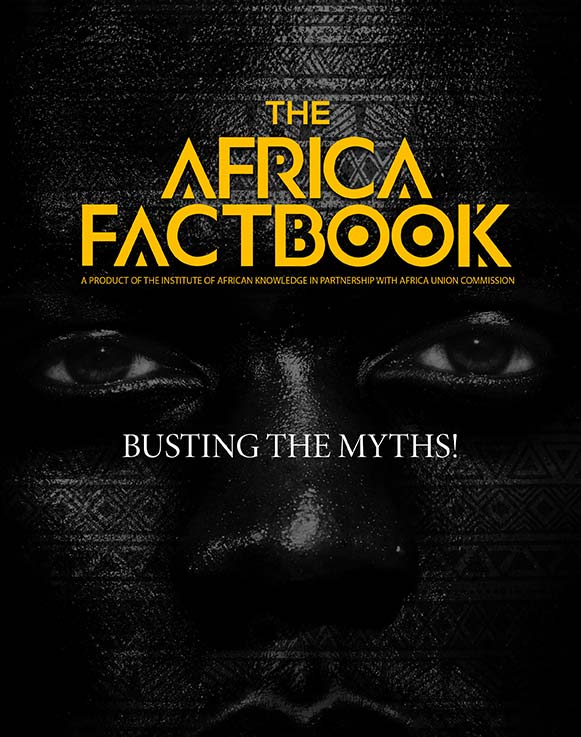
The “Presidential Edition” is 800 pages long, while the full 1,200-page book (otherwise known as the Scholar’s Edition) will be available to the public in December.
The fully illustrated Africa Factbook is envisioned to be a teaching tool to revolutionize African classrooms. Published by the Harare-based Book of African Records (BAR) in partnership with the African Union Commission (AUC), it is based on Africa’s time-tested philosophy that says, “Until the story of the hunt is told by the lion, the tale of the hunt will always glorify the hunter.”
As the African-American historian Dr. John Henrik Clarke wrote: “When Africa was colonized, the information about the continent was also subject to colonization. Hence, much of the history of Africa and its people are still hidden, neglected, and distorted. Twisting of facts and a confusing terminology still impact on our understanding (or misunderstanding) of African history.”
“They told us our ancestors added nothing to civilization because they were not civilized, yet their museums are filled with stolen treasures from all over Africa made in the image and likeness of our African ancestors,” says an African blogger.
The Africa Factbook’s main theme is “Busting the Myths” – the major myths that Euro-American historians and writers have crafted about Africa for centuries. Remarkably, it does so in an unapologetic manner.
“An African historian does not study history to understand the past, but to liberate himself from the past,” insists Ambassador Kwame Muzawazi, the CEO of the Harare-based Institute of African Knowledge (INSTAK), which produced the Factbook in collaboration with BAR.
“With the right promotion, The Africa Factbook should stop the process of maligning Africa and turn things upside down, in the proportion of [Charles] Darwin’s theory of evolution,” one AU Commission official said after reading the first draft.
In the beginning
The book was inspired by a conversation in 2016 at the AU headquarters in Addis Ababa, Ethiopia, between the AU Commission’s then chairperson, Dr. Nkosazana Dlamini-Zuma, and Muzawazi, a young Zimbabwean pan-Africanist full of ideas.
Muzawazi, now 37, in 2010 traversed the entire continent in a car, from Morocco to South Africa, on a research tour that took 174 days across 17 countries and 24,000 kilometers. He had also set world record for the longest lecture (128 hours nonstop), recorded by the Guinness Book of Records.
In 2016, after receiving a copy of Muzawazi’s Book of African Records – a book that records Africa’s greatest achievements – Dr. Dlamini-Zuma expressed a slight disappointment that though the book was great, it relied too much on non-African sources. Her comment encouraged Muzawazi to ask if the AU would work with the Book of African Records to produce a factbook on Africa that would depend on African sources. Dr. Dlamini-Zuma jumped. The two pan-Africanists hugged. And a new project was born.
The AU Commission signed an agreement with BAR in 2016 to produce The Africa Factbook. The work was eventually farmed out to BAR’s sister-organization, the Institute of African Knowledge.
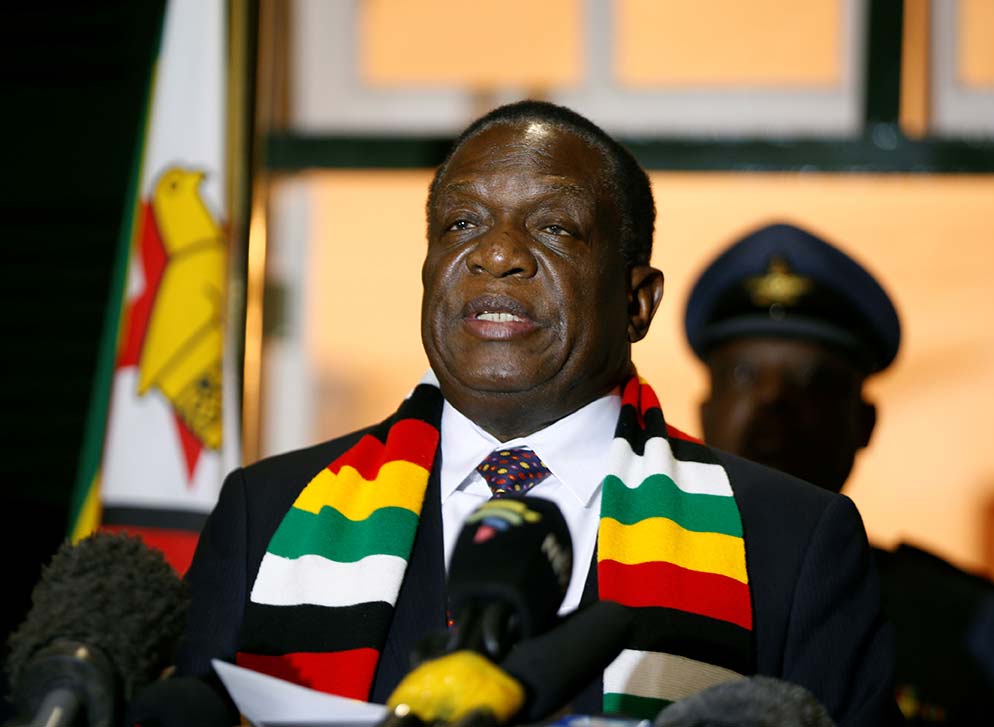
Funding was a challenge until last year, when the Zimbabwean government, headed by President Mnangagwa, stepped in to provide finance for the first edition. INSTAK then appointed Baffour Ankomah, former editor of the London-based New African magazine, as editor for the Factbook. It took one year, from September 2019 to September 2020, to complete it.
The sections
The book is divided into four sections. Section A sets out to bust some of the key myths that Westerners have created about Africa. Section B contains country profiles and fast facts about Africa’s 55 countries. Section C is about African pioneers, inventors/inventions, discoveries, journeys, innovations, writing systems, and more.
Section D deals with the African Diaspora, otherwise known as “Global Africa.” These are the African-descended people scattered to the four winds, who should not be confused with the new diaspora of continental Africans who live outside Africa today. The triumphs and woes of Global Africa are Mother Africa’s as a collective. Their pain is Africa’s pain, and therefore ample space is given in the Factbook to chronicling the story of Global Africa.
The Factbook producers’ definition of an “African” is the one popularized by the Jamaican singer Peter Tosh: “Don’t care where you come from. As long as you’re a black man, you are an African.”
The contents
For centuries, Africans were made to believe the lie that ancient Egypt, the greatest civilization the continent ever produced, and its pyramids and other achievements, had been done by non-Africans. At best, they ascribed them to the ancestors of Egypt’s current admixture of Arabic and European population.
That is not true, the Factbook argues. It says there is empirical evidence that many of the stupendous achievements of ancient Egypt (or Kemet, as the ancestors called it) were done when that glorious land was a black empire, ran by black people. It says the roots of most modern black Africans can be traced to ancient Egypt as a result of the six migrations that followed the many invasions of Egypt by foreigners, including the ancestors of the current Arab population, who invaded between 639 AD and 646 AD.
Ayi Kwei Armah, one of the greatest writers Ghana has ever produced and a serious Egyptologist in his own right, uses the term “the European view” to describe Europe’s biased attitude to Egypt.
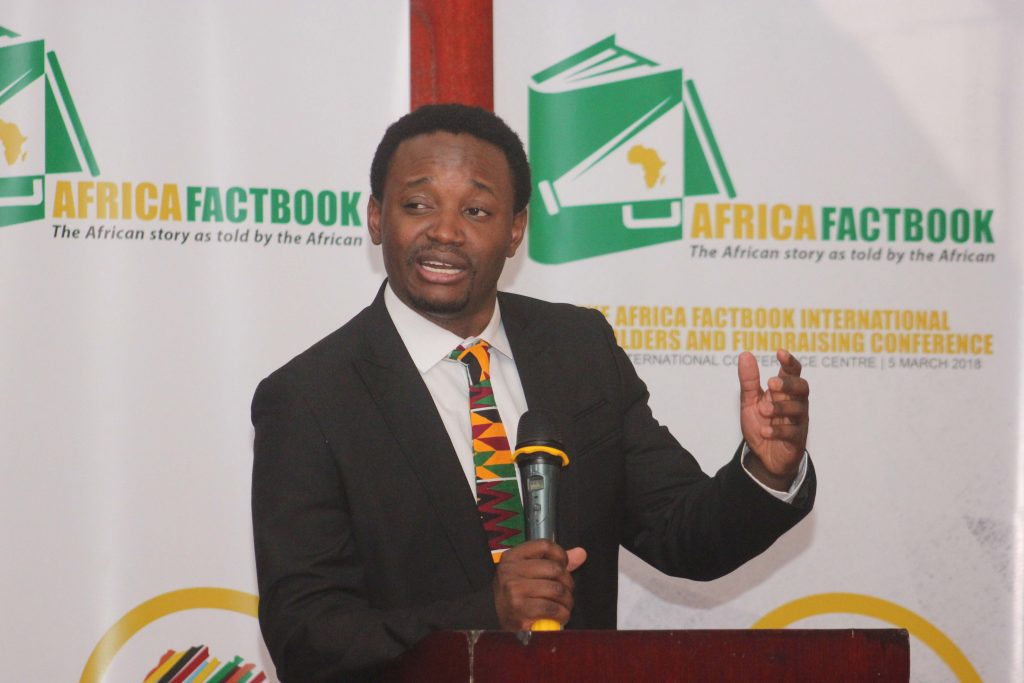
According to Armah, “in a reasonable world, the identity of the [Ancient Egyptians] would be straightforward. However, we live in a word where… the European architects of slavery, colonialism, and globalization share a common take on Africa: whatever is valuable on this continent does not belong here…. Intellectually, it means a commitment to the view that any human creation that shows intelligence, organizational ability, technical skill, or artistic genius cannot possibly be African.”
But from his decades-long study of Ancient Egyptian literature, Armah is convinced that the material and intellectual record of Ancient Egypt leaves no doubt as to the technical, intellectual and artistic skills of the people who produced the works now classed together as Ancient Egyptian civilisation.
“These people,” Armah says, “had the unmistakable stamp of genius. They had such high organizational skills that their civilization lasted thousands of years longer than any other. The quality of their work and philosophy still astonishes the world. Since in a world dominated by slavers, colonialists, and globalizers, the occurrence of high material or intellectual value in Africa is a racial taboo, questions that would ordinarily require only research and accurate reporting were turned into matters of furious controversy.
“The questions are: Who were the Ancient Egyptians? Who, according to reports from other ancient people, were they? More specifically, what did they say about their own identity?”
Who were the ancient Egyptians?
There are two main views regarding the identity of the ancient Egyptians, Armah says. One is “the African view,” advocated by African scholars such as Cheikh Anta Diop, Chancellor Williams, and Theophile Obenga. The other was developed by invading Arabs and Europeans in the age of slavery and consolidated in the colonial period when Africa was under European rule. It is a view mostly actively advocated by Europeans, Americans, and their followers in Africa.
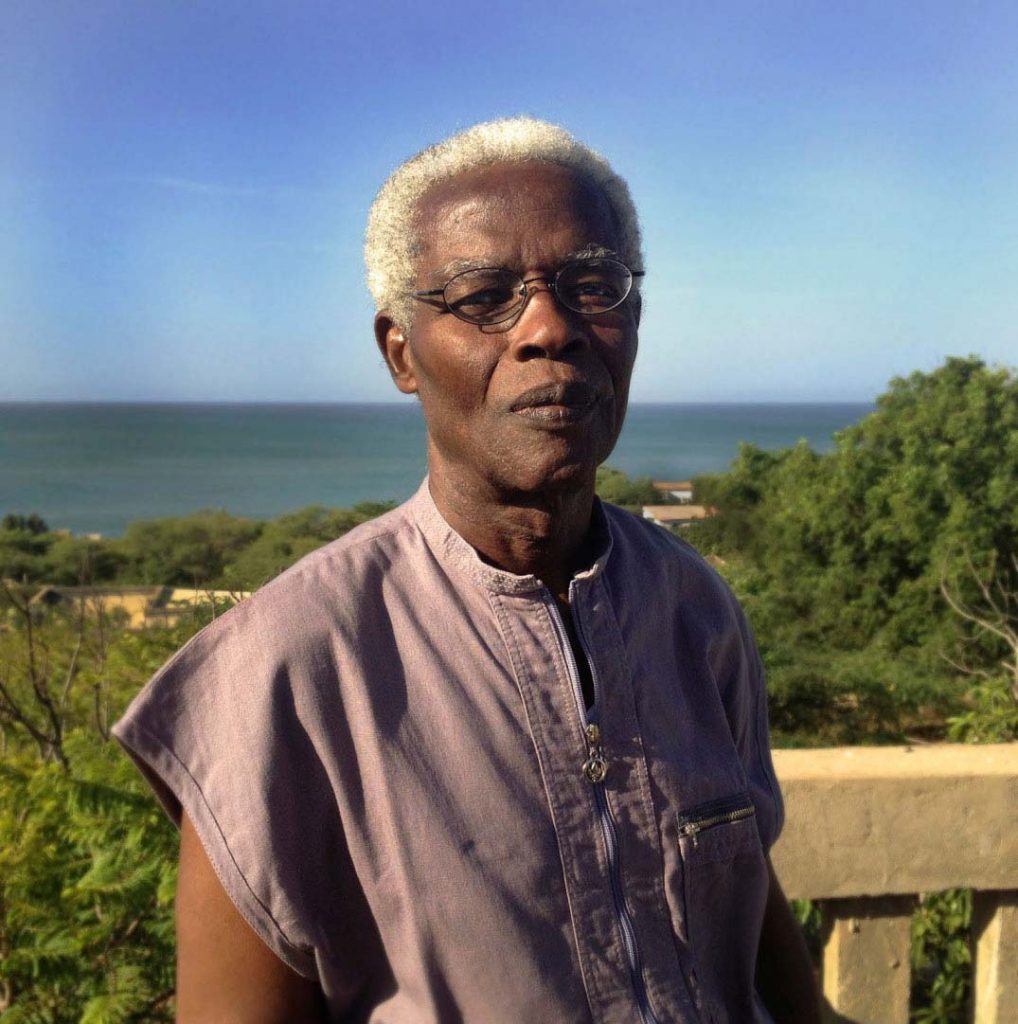
This view “is supported by the monumental political, financial, and military power accumulated over the past centuries by states and corporations which have benefitted from its application,” Armah says. “It is echoed by the most powerful information media in the world: movie, television, magazines, newspapers, and radio. It is the view of Africa and Ancient Egypt familiar to long-established universities and their departments of African studies. It assumes that Ancient Egypt could not have been African. It can be called, with considerable accuracy, ‘the European view’.”
According to Armah, “the African view is the work of persons with no material or political power to speak of. They own no states or armies, corporations, or foundations. They dominate no universities, publishing houses, or news media. Their purchase on movie-making industries is zero. The power of their arguments is based entirely on archaeological and historical evidence, supported by studies in linguistics, material culture, and intellectual history.”
So who then were the Ancient Egyptians? In The Africa Factbook, Armah turns to “Kmt,” the root word of “Kemet.”
“A frequent in the literary and ceremonial texts of Ancient Egypt, it has multiple meanings depending on the determinative sign following the root ideogram ‘Km,’” he says. “Km itself, however, invariably means black. The way the ideogram is written, it has been variously interpreted as representing a piece of crocodile skin or a short piece of burnt wood. The bit about the crocodile skin, though an authority as useful as Alan Gardiner favors it, is rather fanciful. The reading that sees it as a piece of charred wood is more plausible. Divergent interpretations of the object are represented, notwithstanding, scholars agree on the meaning: Km, black.”
Armah continues: “The way the hieroglyphic writing system works, when this sign [Km] is followed by a determinative sign for persons, the composite sign means black people. When the determinative sign is a papyrus roll, the standard symbol for intellectual values, the composite signs means a black book or black literature.
“When the determinative sign shows a circular city enclosing crossroads, the meaning is a black city or a black nation. All three hieroglyphic groups were regularly used by Ancient Egyptian scribes, depending on whether they wanted to designate their nation, their people, their literature, or a particular holy book.
“The unvarying root was Km, black. What this means is that the Ancient Egyptians called themselves black, and considered their culture and literature black. Clever people with time on their hands have tried to explain away these basic facts to make them fit into ‘the European view’. ‘The African view’ demands no contortionist acrobatics. Scholarly respect for recorded data is enough. Learning to read hieroglyphics even better.”
The Factbook devotes considerable space to the “African view.” It quotes Armah: “There was a time when African intellectuals who knew our history were too beaten down to speak up, and when those trained to speak in the world the slaves made knew only how to repeat their teachers’ words. Now some of us have finished our mimetic training, made contact with the silenced voices uttering our history, and are ready to tell our story on the basis of our historical truth.”
The Akans and Ancient Egypt
The Africa Factbook also contends that the Akan people of Ghana and Cote d’Ivoire are descended from the inhabitants of ancient Egypt, their ancestors leaving during the six migrations that followed the foreign invasions. From Egypt, they went to the northwest part of the continent, where they established the old Ghana Empire that spread across parts of modern Mauritania, Senegal, and Mali.
As the Ghana Empire declined and Islam spread across the region, converting all they could sometimes by force, the Akans (who never wanted, and still do not want, to convert to Islam) moved south in stages, establishing empires as they went along, until they hit the Atlantic Ocean. They were once one people living in the Bono Empire in what is now the forests straddling the colonial border, which split the Akans between Ghana and Cote d’Ivoire. Today, the Akans are the largest single ethnic group in both countries, making up about 45% share each of the populations of the two countries.
From his decades-long study of Egypto-logy and ancient Egyptian literature, Ayi Kwei Armah tells how pleasantly surprised he was when he came across words in the ancient Egyptian language that sound and mean the same as those in Akan.
“The study of hieroglyphic writings is never going to be an entertainment, but for me it was lightened by surprises,” Armah says in the Factbook. “Given that linkages between the Akan and Ancient Egyptian languages were not direct but mediated through a Soninke connection involving multi-millennial migrations over thousands of kilometers, I did not expect to encounter Ancient Egyptian words with the same sounds and meanings as Akan words.
“Yet as I built up my vocabulary in the dead language, apart from the intriguing fact that negations were formed the same way as in my mother tongue [Akan], by the insertion of the prefixes nn and mm, certain words jumped out at me.
“One was the Ancient Egyptian word for the sun. Actually, there is not just one word. The sun as deity is called Ra. The visible sun, supposed to be the boat in which the deity rides daily across the sky, is called wia. The Akan name for the sun happens to be the same word: wia. Another example: the ancient Egyptians used a drill for making fire. The fire drill was called wja. The Akan word for fire is pronounced the same way: oja.
“Several other matches came to my attention, like bew, meaning place, fa, meaning to take, and sen, meaning to pass. My search, however, was not focused on linguistic data. I treated the matching words as interesting asides, and concentrated on the assessment of literary values.”
Akan and Shona
There are similar links joining many African languages. For example, the Shona people of Zimbabwe in Southern Africa live thousands of miles away from the Akan of West Africa. But the two languages share some common words. For instance, the word mu means “inside” in both Shona and Akan and is pronounced the same way by the two peoples.
The word ye means “is” in Shona and Akan and is also pronounced the same way by the two peoples. Ne which means “and” in Akan, is rendered na in Shona (when describing humans) and ne (for objects). Soro, which means “up” or “above” is the same in Shona and Akan.
The word duku which means a “headtie” (mostly for women) has the same meaning and pronunciation in Shona and Akan. The Zambians also use duku for a headtie.
Zimbabwe shares a tiny border with Namibia around the Victoria Falls area. Otherwise Zimbabwe is generally separated from Namibia by Botswana. But one of the largest ethnic groups in Namibia, the Herero, speak a variant form of Shona called Otjiherero. The Hereros are a Bantu ethnic group who are spread over Namibia, Angola and Botswana.
So what does this tell us? In the simplest form, according to the Factbook, the Akan people and their cousins (the Seraholes or Sonninkes, who are spread over West Africa) and the Shonas of Zimbabwe, the Hereros of Namibia and the many other groups in the east, south, and central parts of Africa come from a common source and once lived together – in Kemet (ancient Egypt) and in Nubia/Cush.
Thousands of years after their ancestors migrated from the Nile Valley civilizations and spread across the continent, their languages have grown apart from each other because of environmental factors. But certain stubborn words have survived and are still in use today, despite the huge distances between the locations of the modern African populations.
Akan funerals
For those who have wondered why the Akans love funerals, the Factbook has the answer: It says their rites and traditions come from ancient Egypt. The ancient Egyptians were serious believers in the afterlife. The Akans are also serious believers in the afterlife.
According to the Factbook, the pyramids in Egypt were generally funereal in nature. The departing king, the Pharaoh, had to be provided with creature comforts to make his stay in the afterlife enjoyable. So he must have his palace in the afterlife (represented by the pyramid). He must have his wives or some of them in the afterlife. He must have his servants, subjects, gold, and other material comforts. So some of his wives, servants, and subjects were killed and buried with him in the pyramid. Gold and other artifacts are always part of the burial requirements. The Akans carried over these practices when they migrated from Egypt.
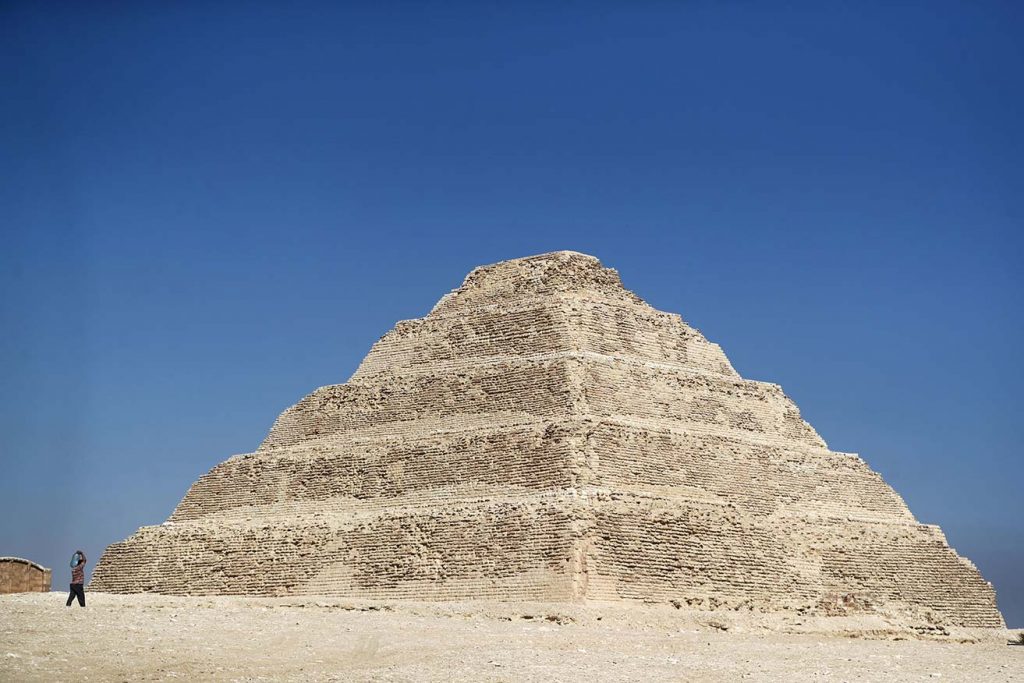
The ancient Egyptians also believed that answers to philosophical life queries could best be found if the living maintained unbroken contact with their ancestors, and also remembered that there were many members of the society yet to come. The Akans believe in the same.
But why the ancestors? Because they were the founders of society and deserved high respect as originators. Also, because they solved many of life’s problems in their time. The living who learned to communicate with them could use their accumulated experience, avoid old pitfalls and invent new solutions by combining inherited ideas. The Akans believe in the same thing.
And why the unborn? The Factbook quotes Armah explaining that it is because a sense of responsibility to future generations could spell the difference between the catastrophic waste of resources and their creative use. The necessity of maintaining a balance between the interests of the living, the dead, and the unborn required the creation of a great many cultural aids to remembrance.
The important thing was not to forget. Carried over the centuries and millennia on a culture of remembrance, revered ancestors metamorphosed into legendary figures. In time the illustrious took on the status of divinities. In this way ancient Egyptians peopled the visible universe with traces of ancestors who would otherwise have been easy to forget.
According to Armah, a prerequisite of social survival and wellbeing in ancient Egypt was that ancestral memories be kept alive and that lines of communication between ancestors, the unborn, and the living be kept permanently open.
The ways of keeping those lines open were numerous. A simple but essential one was to keep the names of the dead among the living. Ancient Egyptians considered the loss of one’s name a form of a psychic death. The Akans believe the same.
Choice food at burials, libations of favorite drinks at baptisms, the giving of the names of the dead to the newborn, and every mark of continued affection helped to maintain familiar bonds in Ancient Egypt. Again, the Akans believe in the same and do the same.
The ancient Egyptian texts about the itinerary of the soul after death happens to be the same as in Akan and other African cultures. In ancient Egyptian cosmology, death was the start of a journey into another world. A good death meant a smooth journey. It was not the human frame that went on this journey but the ba or ka (or kra in Akan) or the invisible soul (in English). It had to be given good wishes, prayers, and things to help it complete the journey, like food, drink, clothes, jewelry, and currency.
In the spirit world of ancient Egypt (Asamanado in Akan), gold dust was the preferred currency, though apparently the spirits would take ordinary coins if gold supplies were short. The money was needed for crossing the river to where the dead dwelled on the far bank, to pay a ferryman called Nemty to take the spirit to places reserved for the blessed ancestors. The Akans believe in the same.
“It was said the soul whose relatives and friends failed to bury the body with appropriate food, drinks, and currency could not cross the river,” Armah says. “In such cases, something terrible happened. That soul, neither alive nor yet properly dead, eager to reach the other bank but unable to, would ceaselessly roam the near bank.
“There, it would turn into a frustrated, angry spirit, a tofo or a samana (in Akan), restless, implacably destructive, forever wandering, lost. In that state, it had no power to do well. But it could cause tremendous harm to the living relatives and friends whose neglect caused its ruin, apart from visiting random mayhem on all else in its path.” Both ancient Egypt and Akan cultures had this belief.
Any Akan reading The Africa Factbook will find resonance between their culture and the ancient Egyptian written records.
African foundations of world religions
The Africa Factbook also busts the myth that says Africa has no religion, only witchcraft. There is evidence that the major religions that emerged from the Middle East – Judaism, Christianity, and Islam – all have roots in, or borrowed heavily from, African religion. Therefore, religion is one of Africa’s major gifts to the world.
This evidence shows that for thousands of years of prehistoric and recorded history, Africa led humanity in the art of group cohesion and social organization. The spiritual matrix devised by African societies provided the earliest substance of social and psychological cohesion known to man.
These later heavily influenced the societies of Western Asia and the Mediterranean world in particular, and were therefore elaborated into distinct but ultimately related patterns. Now referred to as “religion,” these psycho-spiritual systems have profoundly affected humanity’s general way of being; its moral, social and spiritual software.
For example, the ancient Egyptian high priest Ausare, whom the Greeks called Osiris (and the Akans Asare), the lord of resurrection, was the first known person in the history of religion to have died and been resurrected. His statue resides in the Louvre museum in Paris.
Ausare’s crown and symbols of office, the flywhisk and shepherd’s crook, were also borrowed by Christianity. Ausare’s crown evolved into the mitre won by the Pope, the Archbishop of Canterbury (the head of the Church of England), and other Christian leaders today.
The Africa Factbook quotes Gerald Massey’s 1900 book, Ancient Egypt, Light of the World (reprinted in 1986) which says there are over 200 parallels between ancient Egyptian and Christian doctrines.
Massey’s view is supported by John Glover Jackson, the American pan-Africanist historian and writer, who, in his 1985 book, Christianity Before Christ, says that the Immaculate Conception and the death and resurrection of a savior-God were old themes in ancient Egyptian religious literature, long before Christianity was born. The 19th-century German Egyptologist Adolph Erman, comparing the work of the ancient Egyptian sage, Amenemope (who wrote a lengthy collection of proverbs and moral instructions) and King Solomon’s Book of Proverbs in the Bible, found uncanny similarities between the two, sometimes even word-for-word. Amenemope lived about 600 years before Solomon. Since Erman’s comparison, scholars have increasingly looked at possible evidence of considerable Israelite borrowings from Ancient Egyptian sources.